 |
 |
| Panel Computer Hard Disk Drive Precautions |
 |
 |
| An unfortunate fact of life these days for PC users is that every hard disk has a limited lifetime, meaning it is bound to fail eventually. There are a number of moving parts in a hard disk drive, such as the read/write head and spindle motor, and it is this type of part that usually suffers the most wear and tear over time. Here are some precautions you can take to give your drive(s) a safer and longer life. |
|
| 1. Vibration and Shock Precautions |
Of all the components in a panel computer, the hard disk drives are the most sensitive to vibration and shocks. Data shows that more than half of all panel computer malfunctions are the result of these two problems.
Generally speaking, hard disk drive makers rate their drives' resistance to vibration and shocks at 0.5 G and 100 G, respectively. (For detailed values, refer to your HDD unit's user manual.)
It is especially dangerous when a hard disk drive receives a shock or jolt while it is operating, since this can result in the read/write head scratching the disk surface. Since the head operates only a few micrometers above the disk surface, even a slight shock can cause the head to contact the disk and damage its outermost magnetic layer. |
|
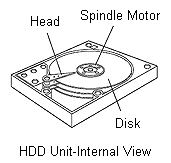 |
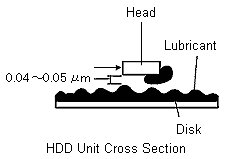 |
|
| Therefore, never install a panel computer in equipment which will vibrate or be moved while the PL is operating. |
|
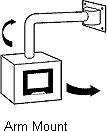 |
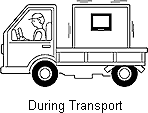 |
 |
|
 |
 |
|
| (1) |
Be sure that equipment or machinery equipped with a panel computer that uses a hard disk drive is not subjected to excessive vibration. |
|
| (2) |
When you have to transport equipment or machinery containing a panel computer, the vibration and shocks that occur during transportation will be automatically transferred to the hard disk drive, which may lead to a drive breakdown or malfunction. |
|
 |
| - |
When a panel computer is to be moved, make sure it is first, removed from its installation panel, packed in special protective packaging and then transported separately from other equipment or machinery. |
 |
| - |
Re-install a panel computer only after the equipment or machinery has been securely fixed in position. |
|
|
| (3) |
Installing a panel computer in equipment that is movable means it will be subject to vibration or shocks, which can lead to a breakdown or malfunction. |
|
 |
| - |
Avoid moving equipment or machinery containing a panel computer while the panel computer is operating. |
 |
| - |
If equipment or machinery must be moved, try to minimize any vibration or shocks, especially when moving over cables or grooves on the floor. |
|
|
| (4) |
After installing a panel computer in a portion of a machine that moves, such as an operation panel's door, be sure that the panel computer is not subjected to excessive vibration or shocks when opening or closing the door. |
|
 |
| - |
Open and close doors carefully to avoid causing excessive vibration or shocks. |
 |
| - |
When the panel computer is mounted on a movable stand or arm, avoid subjecting the panel computer to sudden shocks, i.e. by hitting the stand's movement stopper, etc. |
|
|
| (5) |
Be very careful when handling a hard disk drive, i.e. when replacing or adding a hard disk unit. |
|
 |
| - |
Even a minor shock, such as from knocking the disk over on a desk, can lead to a hard disk failure. |
|
|
| 2. Temperature and Humidity Precautions |
With any electrical device, the higher the ambient temperature, the shorter the device's operation life will be. Therefore, when installing the PL in a small-sized control panel, be careful to position the unit so that it will not overheat. Sealed control panels should be equipped with fans to remove excessive heat.
There is also a risk from sudden temperature changes, which can create condensation inside the drive. This condensation can lead to the drive's read/write head(s) adhering to the disk surface(s) which will, in turn, stop the hard disk from rotating. Condensation tends to occur when the temperature inside the drive suddenly falls, for example, just after the unit is moved to a new position, or after operation is stopped in a cold factory.
Sudden changes in temperature or air pressure can cause disk surface material to evaporate, which can also cause the head to adhere to the disk surface. This sometimes happens when a hard disk drive is left unused for a long period of time.
Try not to cause a sudden change in air pressure inside a hard disk, for example, by blowing a stream of high pressure air directly at the drive's vent hole. |
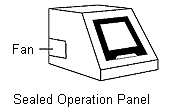 |
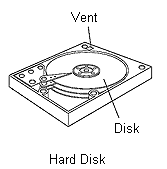 |
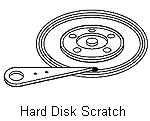 |
|
| 3. When Data is Lost or Corrupted |
| One possible reason for either losing or corrupting hard disk data may be the panel computer's application software. To minimize the risk of data loss or corruption, you should check your disk(s) regularly with a disk diagnosis utility, such as the Windows "Scandisk" utility. |
 |
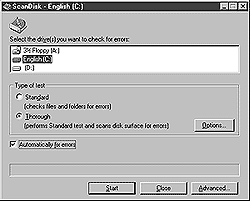 |
 |
When using Windows, be sure to follow that OS' standard shutdown procedures before turning the panel computer OFF. Suddenly turning the PL's power OFF may result in hard disk data loss, which may prevent Windows from being able to start up again.
If Windows fails to start up (from the hard disk) you can try to start your panel computer from a special "start-up" floppy disk, and then run a disk diagnostic utility program. To create a Windows start-up disk, click on Start, Setup, Control Panel, Add and Delete Applications, Start-up Disk, and then Create Disk. |
 |
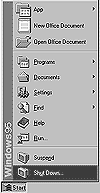  |
--> |
 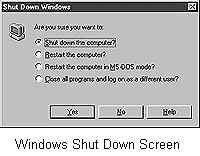 |
|
| 4.Hard Disk Service Life |
The average service life of a hard disk is usually given as "5 years or 20,000 hours." This means if a hard disk operates 24 hours a day, you will need to replace your drive with a new one every 1.5 to 2 years. (For specification details, refer to your hard disk drive's user manual.)
The measure of service life used by most hard disk manufacturers is "mean time between failures" (MTBF)*1 (usually quoted at between 300,000 to 500,000 hours). The ratings (for expected service life) used by PC makers are more conservative, as they are based more closely on "real world" usage conditions. Since expected service life and MTBF figures can differ by hundreds of thousands of hours, we recommend you use the expected service life value. For example, the usual service life of a 2.5 inch drive will be almost 5 years or 20,000 hours, if used at the temperatures specified for your PL. However, if a drive is operated continuously, i.e. 24 hours a day, its service life will be shorter.
Also, when using a drive in equipment that runs continuously, you can extend the drive's life by using the PL's BIOS area "sleep" feature to turn the drive OFF after it is unused for a specified period of time. (BIOS area "HDD Power Down" feature's "time" setting. |
 |
| Certain hard disks are equipped with a periodic head cleaning function, which also helps to extend drive life. |
 |
 |
 |
| *1 Mean Time Between Failures = |
Total operation hours (hr) |
--------------------------------------
Total No. of Breakdowns *2 |
| *2 Excluding breakdowns caused by external factors such as improper handling, usage at temperature or voltage levels in excess of those specified, host PC and interface problems. |
 |
|
|
|
PL-X900 Series BIOS Screen
After selecting POWER MANAGEMENT SETUP from the BIOS main menu, the following screen will appear. |
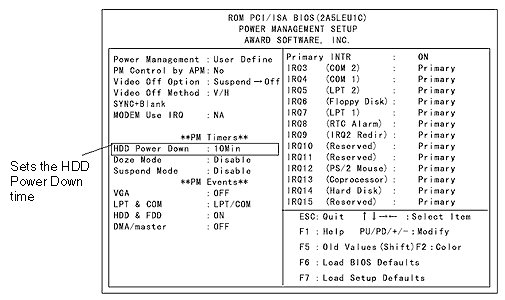 |
|
| 5. PL-X900 Series HDD Protection Features |
| (1) |
Shock Absorbing Mechanism |
|
The hard disk's drive unit is protected by a shock absorbing pad which cushions the unit in the event of a shock. |
|
| (2) |
Uses a Variety of Drive Units |
|
Hard disk drives can be used together with "flash" type disk drives. This boosts data security by allowing you to save important data to a flash drive, which is highly resistant to vibration and shocks. |
|
| (3) |
Mirror Disk Unit (optional) |
|
A "mirror" type (RAID level 1) hard disk unit automatically duplicates your data to protect against accidental data loss. |
|
| (4) |
Removable Cartridge Type Drives |
|
Three types of "cartridges" can be used; a hard disk drive, a flash type drive and a floppy disk drive. This "cartridge" system means that in the event of a drive problem, you can easily remove the unit and replace it with a new one. |
|
| 6. Data Backup |
It goes without saying that backing up your data regularly is vital. Even if a drive failure is the result of a manufacturing defect, we cannot guarantee that you will be able to recover all your data. As a result, we strongly suggest that you prepare a system which protects you from data loss in the case of a drive breakdown. At the minimum, we recommend you install a second drive in your PL, which contains the same software as your main drive.
One PL-X900 series option is the Mirror Disk Unit (for backing up important data). In some cases, there will be clear warning signs before a PL hard disk drive fails. For example, if one of the disk drive motors begins to make strange noises or repeatedly performs disk seeks, a problem may be about to occur. In both of these cases, do not turn the PL OFF. Instead, immediately back up your data, since once you turn the PL's power OFF there is a good chance the unit will not start up again. |
|
| 7. Replace Your Hard Disks Regularly |
| Since every drive has a finite sevice life, it should be replaced periodically with new drive, according to the drive's service life rating. In addition, inspecting your drive(s) regularly will allow you to detect potential hard disk problems in advance, giving you the option of either fixing the current drive or replacing it with a new one. No part or device can be used forever and even under normal usage conditions, as your drive approaches the end of its service life the chance of a breakdown will increase. Thus, periodic inspection and replacement of your drive(s) will help to prevent costly breakdowns and expensive downtime. |
|

